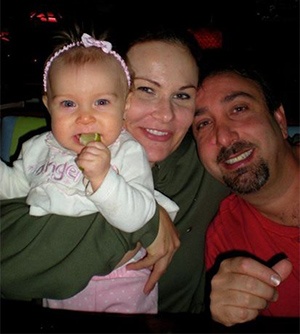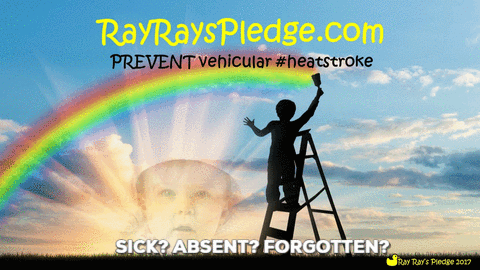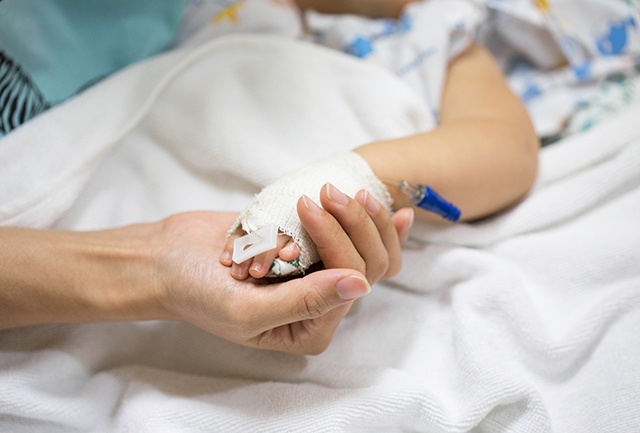
Have you ever had a child in your child care program not arrive by her usual arrival time and simply rationalized that the child must be sick or on vacation today? My mission is to show you how this assumption can have lethal consequences for dozens of young children annually.
How? Each year since 1998, an average of 37 children have perished due to what is known as vehicular heatstroke, also referred to as vehicular hyperthermia or child hot car deaths. At the time of this blog, 23 cases have been documented in 2017, and more than 723 since 1998.
Child vehicular heatstroke was a danger to child passenger safety that I had never heard until the afternoon of May 25, 2011. This was the day I became schooled about this danger in the worst possible way—personal experience. My daughter and soulmate, Sophia Rayne (nicknamed Ray Ray) Cavaliero, was the fourth vehicular heatstroke victim of 2011. The reason? Forgotten (Backseat) Baby Syndrome during what should have been her morning child care drop-off.
The Morning of the Tragedy
Our entire family had overslept on the morning of our heatstroke tragedy. It was the first time that Ray Ray had slept through the night, omitting her usual 5 a.m. feeding, which had always woke us like an alarm clock. I woke to a clock blinking 9:43 a.m.! A chaotic household then hastened to get ready for work and child care. We managed to get Ray Ray secured into her car seat by 10:15 a.m., after which my husband traveled out of our neighborhood and to what I had assumed would be a late start to a normal day for everyone.
But within the next five minutes the day would become anything but normal. Beyond our neighborhood is a winding, hilly road, which is the gateway to getting into town. At the end of this road, my husband would turn left at the traffic light to take Ray Ray to child care, then circle back to the main thoroughfare to get to work. For reasons unknown to us, my husband made a right turn at that T-bone intersection instead of that critical left turn required for child care drop-off. One wrong turn resulted in him going directly to his office instead of the child care center.
Since Ray Ray was positioned in a rear-facing position, he couldn’t see her. We think she had also probably dozed off as was customary when she was in a vehicle, so he also could not hear her. It wasn’t until nearly three hours later, when I picked Brett up for a lunch date, that my conversation with him about Ray Ray and her beautiful dress for what was to be “Tropical Day” at school (we had dressed her in a bright floral dress that had been a birthday gift from her teacher in her new class) triggered Brett to recall the morning’s events.
He frantically told me to go back to his office. When I asked why, he delivered these fateful words: “I can’t remember dropping Ray off at daycare this morning.” My heart sank. I knew this was bad, but I had no idea at the time just how bad this day was about to end, with the tragic loss of my beautiful Sophia Rayne.
 As much as you would like to think that my story is just a freak accident, something done by stupid or negligent parents, I must sadly inform you that this assumption couldn’t be further from the truth. The majority of families who have lost children to vehicular heatstroke are hardworking, honest, respectable, caring parents who experienced a change in routine that created the perfect storm for a vehicular heatstroke disaster on the date of their tragedies.
As much as you would like to think that my story is just a freak accident, something done by stupid or negligent parents, I must sadly inform you that this assumption couldn’t be further from the truth. The majority of families who have lost children to vehicular heatstroke are hardworking, honest, respectable, caring parents who experienced a change in routine that created the perfect storm for a vehicular heatstroke disaster on the date of their tragedies.
In Gene Weingarten’s Pulitzer prize-winning piece about vehicular heatstroke tragedies, “Fatal Distraction,” Dr. David Diamond, a neurobehavioral scientist, deduced from his research of vehicular heatstroke deaths that the most common factor associated with parents who forgot their child in the backseat was a change in routine.
What is meant by change in routine? Sometimes it means that someone other than the usual driver is transporting the child to child care and experiences a fatal distraction. It can also mean a change in traffic patterns due to road construction, a detour, making a wrong turn, or missing your exit on the freeway. Other changes in routine noted in heatstroke tragedies have included oversleeping, a sleep-deprived family due to flu or illness, a new or additional drop-off during the morning routine secondary to having multiple children at different ages, and even taking a phone call at the time of child care drop-off. As I reflect on our story, numerous changes in routine are apparent: a change in Ray Ray’s feeding habits, a family who overslept, a critical wrong turn during transport, and a new class at child care (her death day would have been her second full day in her new classroom).
Sadly, some of Ray Ray’s former teachers had noticed her absence that day but had assumed that the new teacher had already determined her attendance status. Likewise, her new teacher was not yet acclimated to our usual arrival routine and my usual communication of known absences. Thus, it was assumed that Ray Ray was sick/absent. A fatal distraction met a fatal assumption; hence the recipe for vehicular heatstroke tragedy was made, and a beautiful life was taken too soon.
Ray Ray Needs Your Help to Prevent Vehicular Heatstroke Today
YOU can make a difference and prevent vehicular heatstroke tragedies TODAY! One call, text, or alert on your parent communication app/system to determine a child’s whereabouts when she has not arrived by her usual arrival time (aka Ray Ray’s Pledge) can save a child’s life!
If you have not deployed a child care arrival confirmation system such as Ray Ray’s Pledge, please implement one immediately! Another way you can help us to prevent vehicular heatstroke tragedies is to ask your congressman/woman to support the federal Hot Cars Act of 2017, which, if passed, will require the auto industry to implement backseat passenger alerts to prevent accidentally forgetting a rear-facing/ sleeping child in the backseat. Further, July 31 is designated by NHTSA as National Heatstroke Prevention Day. Please follow the social media conversation using #heatstrokekills and #checkforbaby; share and re-tweet heatstroke facts and tips throughout the day to your social networks. Help us save lives that might otherwise be lost due to Forgotten Baby Syndrome.
Dr. Kristie C. Reeves-Cavaliero is President and Founder of Ray Ray’s Pledge. Learn more about how you can take action child hot car deaths.







